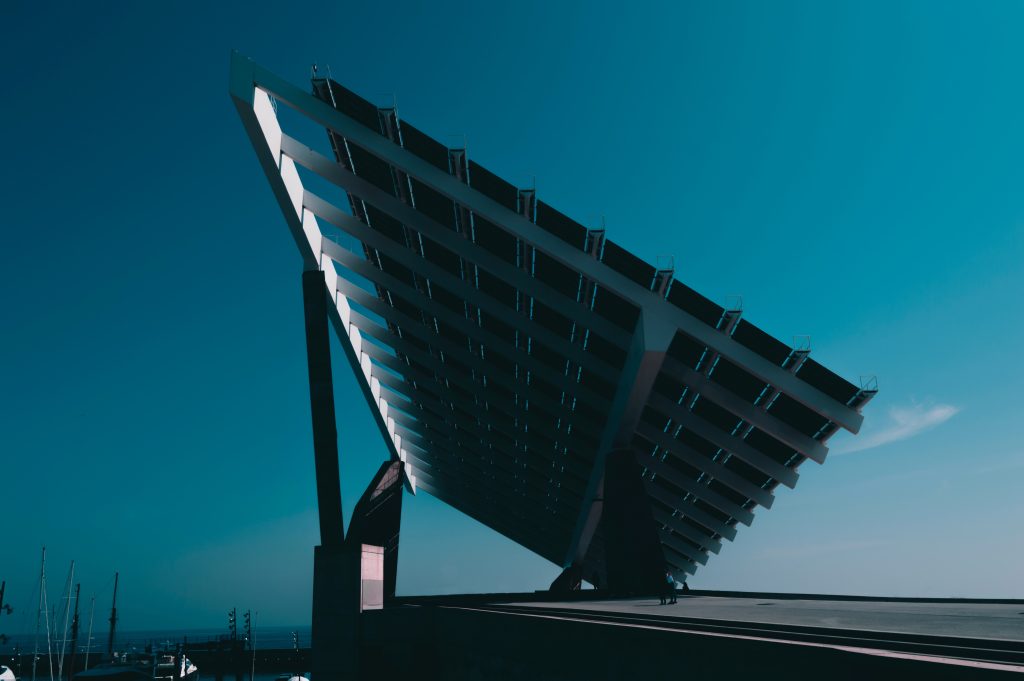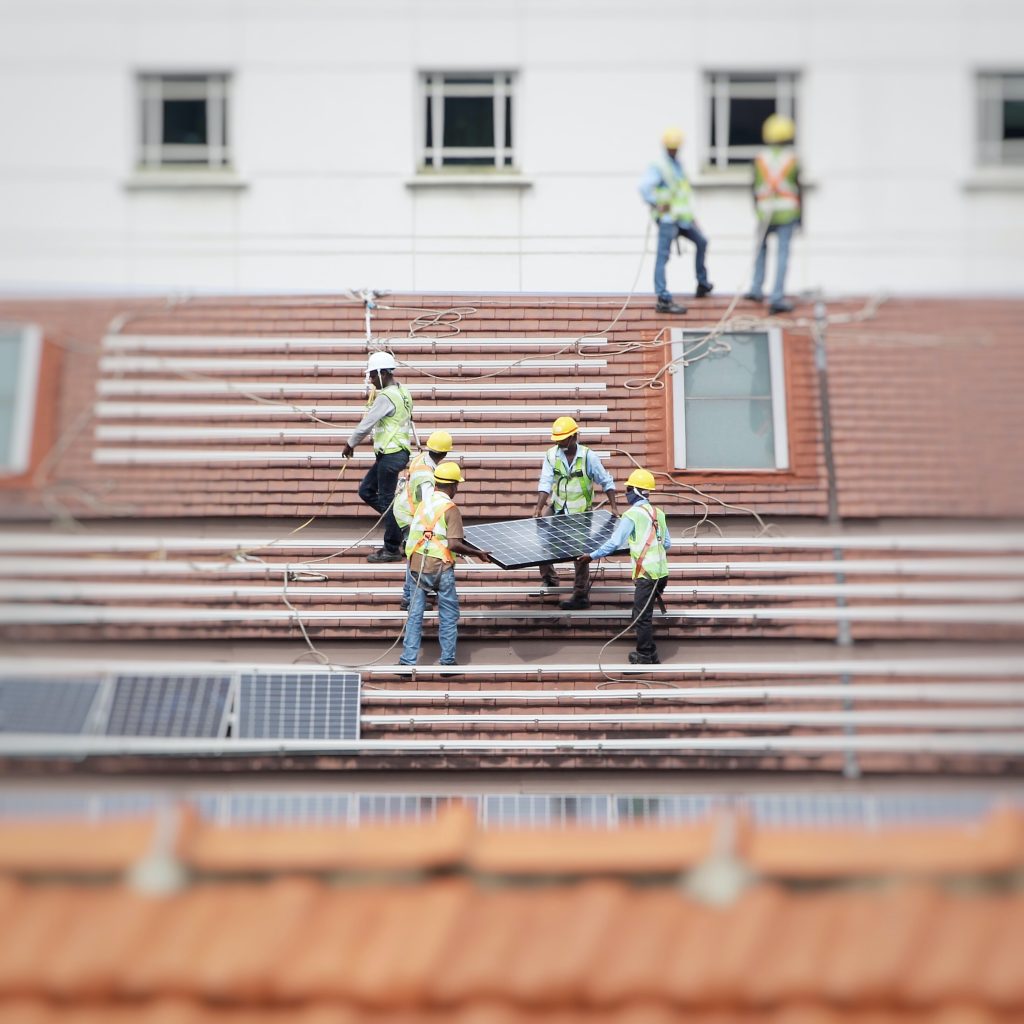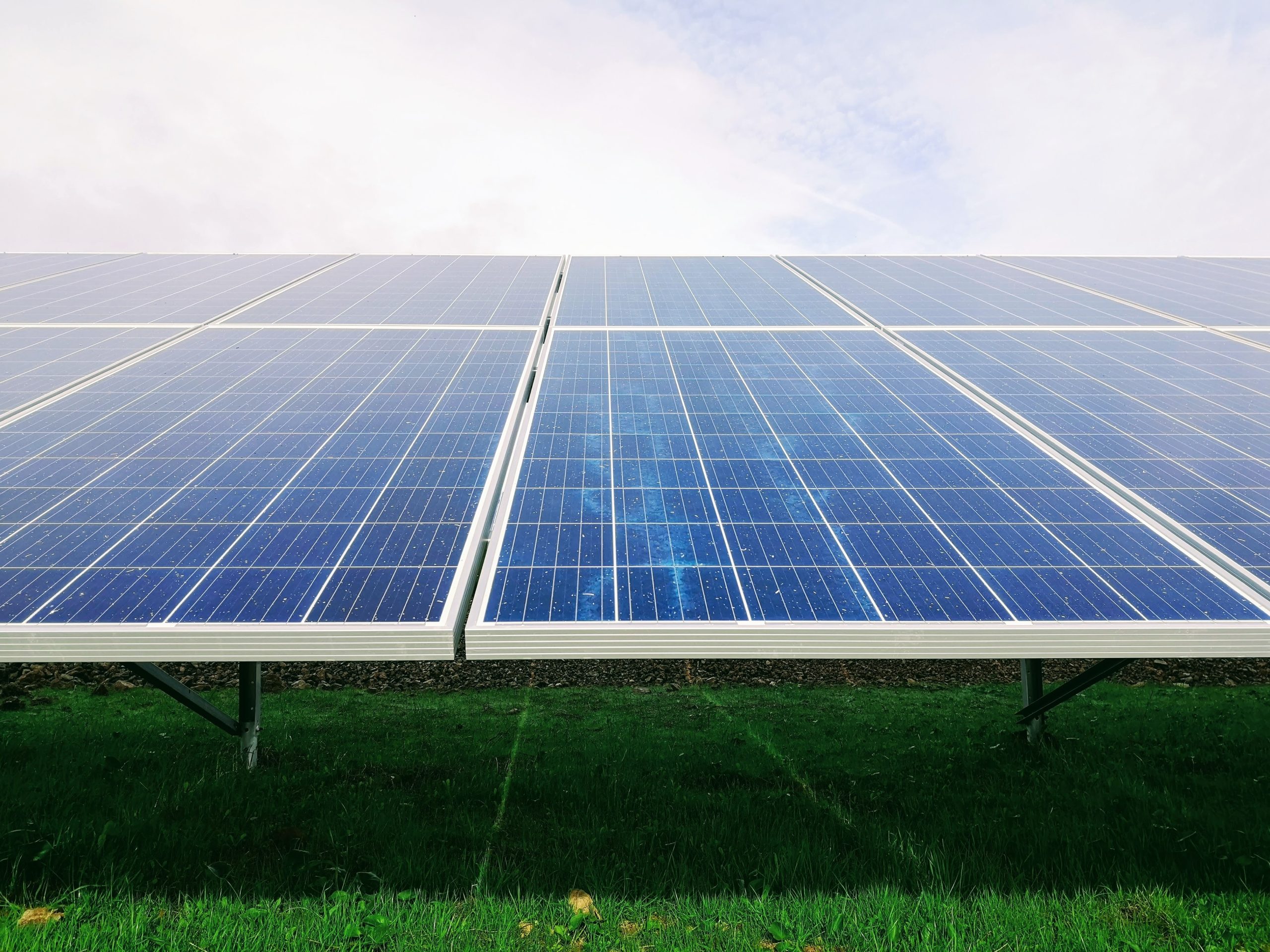So, you’ve taken the plunge and embraced the radiant world of solar panels. You’re all set to harness the sun’s incredible power, save some serious green, and make a sustainable impact on the planet. But have you ever wondered just how long your trusty solar companions will stick around? And what does it take to keep them shining brightly? Let’s dive into the fascinating realm of solar panel lifespan and maintenance to understand how to make the most of your solar investment.
The Solar Panel Lifespan Unveiled
The lifespan of solar panels is like the icing on the renewable energy cake – and a pretty sweet one at that. Most solar panels come with a warranty that lasts 25 years or more, and many experts agree that the actual lifespan can exceed 25 to 40 years. That’s a significant chunk of time for your solar investment to pay off.
As the years go by, your solar panels don’t just suddenly stop working. Instead, they experience a gradual reduction in efficiency. Typically, solar panels degrade at a rate of about 0.5% to 1% per year. This means that after 25 years, they’ll still be operating at about 75% to 87.5% of their original efficiency.
What this translates to is a long-term, reliable energy source that will continue to power your home for decades to come. So, not only are you reducing your carbon footprint and energy bills, but you’re also securing a stable source of clean energy for the future.
Maintaining Your Solar Panels: Easy Breezy
One of the greatest misconceptions about solar panels is that they require an exorbitant amount of maintenance. In reality, maintaining your solar panels is a breeze. These robust, photovoltaic powerhouses are designed to endure the elements and require minimal upkeep.
Here’s what you can do to ensure your solar panels remain in tip-top shape:
- Keep Them Clean: Moreover, the most vital aspect of solar panel maintenance is keeping them clean. Dust, dirt, leaves, and bird droppings can accumulate on the surface, diminishing their efficiency. A simple rinse with a garden hose should suffice, and if needed, a gentle wipe with a soft cloth.
- Regular Inspections: Make it a habit to inspect your solar panels for any damage or shading issues. Cracks, hotspots, or shading from nearby trees or structures can affect their performance. Swiftly addressing such issues can prevent further complications.
- Professional Check-ups: While you can handle basic cleaning and inspections, it’s a good practice to schedule annual or bi-annual professional check-ups. Solar technicians can identify any complex issues, wiring problems, or inverter hiccups that might elude your untrained eye.
It’s important to note that maintaining your solar panels won’t just prolong their lifespan; it will also maximize your energy production. The cleaner and more efficient your panels are, the more you benefit from your solar investment.
The Impact of Solar Panel Maintenance on Your Investment

Solar panels are not just about eco-friendliness; they are a smart financial choice. Investing in solar panels can provide you with substantial long-term savings on your energy bills. But here’s the catch: regular maintenance is the key to ensuring your solar investment keeps paying dividends.
By proactively taking care of your solar panels, you’re not only keeping them efficient but also protecting your investment. When solar panels are well-maintained, they can continue generating power at or near their original efficiency, saving you more money over their extended lifespan. Plus, they remain covered by the warranty, giving you peace of mind.
Moreover, think of it this way: if you were to purchase a brand-new car, wouldn’t you make sure it gets regular oil changes, tire rotations, and check-ups to keep it running smoothly and protect your investment? The same principle applies to your solar panels. Regular maintenance keeps them running at their best, extending their life and preserving the value of your solar investment.
The Inverter: Your Solar System’s Translator
If your solar panels are the rock stars, the inverter is the interpreter. It’s the gadget that translates the sun’s energy into a form your home can actually use. You see, the electricity generated by your solar panels is in direct current (DC), while most of your home’s appliances and the grid itself operate on alternating current (AC).
So, what does the inverter do? In summary, it converts the DC electricity from your solar panels into the AC electricity that powers your lights, gadgets, and appliances. Think of it as a multilingual friend who helps you communicate with the rest of the world. Without the inverter, all that beautiful solar energy would remain locked in a language your home can’t understand.
The Types of Solar Inverters
Just like any good translator, solar inverters come in various types, each with its unique talents. For example :
1. String Inverters
These are like the conductor of a symphony. They manage all the solar panels in a string, making sure they’re playing harmoniously. One of the most popular types, string inverters are cost-effective and relatively simple to install. However, if one panel underperforms (maybe it’s shaded or a bit dusty), the whole string’s performance can suffer.
2. Microinverters
Imagine each solar panel has its personal interpreter. Microinverters are attached to each panel, ensuring that if one panel isn’t performing at its best, the rest aren’t affected. This setup can maximize energy production but tends to be a bit pricier than string inverters.
3. Power Optimizers
Furthermore, each type of inverter comes with its advantages and limitations. The right choice for your solar investment depends on your specific needs, shading conditions, and budget. Your solar installer can help you choose the one that suits you best.
On the other hand, power optimizers are like personal trainers for your solar panels. They optimize the performance of each panel, ensuring they all reach their full potential. Power optimizers can be a good compromise between the simplicity of string inverters and the efficiency of microinverters.
Keeping an Eye on Your Inverter
Additionally, your solar inverter is the heart of your system. If it’s not working, your solar panels can’t do their magic. That’s why it’s crucial to keep a watchful eye on your inverter’s health. Most inverters come with built-in monitoring systems that allow you to check their performance. You can often access this data through a smartphone app or a web portal, making it super convenient.
Here’s what you should be monitoring:

- Daily Energy Production: Keep an eye on your solar system’s daily energy production. If you notice a significant drop in power generation, it might be a sign of an issue with your inverter or panels.
- Error Codes or Alerts: Inverters are pretty good at diagnosing problems, and they’ll often display error codes or alerts. If you see any, don’t ignore them. Contact your solar installer for assistance.
- Shading and Dirt: Keep your solar panels clean and free from shading. Even a small amount of dirt or shade can impact your inverter’s efficiency.
- Regular Maintenance: Your solar inverter may need occasional maintenance to ensure it keeps performing optimally. Check with your installer for their recommendations.
By staying vigilant and monitoring your inverter’s performance, you can catch any issues early and ensure your solar system remains a smart solar investment.
The Lifespan of Your Inverter
Now, you might be wondering, how long does my trusty inverter last? Well, the lifespan of an inverter typically ranges from 10 to 15 years, depending on factors like usage, climate, and maintenance. While inverters aren’t as long-lived as solar panels, they’re also less expensive to replace. So, you can expect to replace your inverter once or maybe even twice during your solar investment’s lifespan.
Here’s the good news: as technology keeps evolving, newer inverters tend to be more efficient, reliable, and long-lasting. So, when it’s time to replace your inverter, you’re likely to find better options that can boost your system’s performance and extend your solar investment’s lifespan.
Inverter Warranties
Before we wrap up this inverter adventure, let’s talk about warranties. Most solar inverters come with warranties that last anywhere from 5 to 12 years, and some premium options offer even longer coverage. Having a solid warranty can provide peace of mind, as it ensures that if your inverter experiences any issues within the warranty period, it’ll be repaired or replaced at no additional cost to you.
Inverter warranties are an essential aspect of your solar investment, so make sure to ask your solar installer about the warranty details of the inverter you choose. This is an area where it’s worth investing in quality to protect your solar investment and ensure it continues to deliver clean, green energy for years to come.
Solar Monitoring Systems
Before diving into the benefits of solar monitoring, let’s explore the types of monitoring systems available:
1. Basic Monitoring
Basic solar monitoring tracks your system’s production and provides daily or monthly reports. With this approach, you can keep an eye on how much energy your panels are generating and compare it to your energy consumption. Furthermore, basic monitoring can often be accessed via a smartphone app or a web portal, enabling you to check your system’s performance on the go.
2. Real-time Monitoring
Real-time monitoring, on the other hand, takes it up a notch. This level of monitoring provides minute-by-minute data on your system’s performance. If a panel suddenly dips in production or there’s an issue with your inverter, you’ll know it in real time. Consequently, this level of monitoring can help you identify and address problems more swiftly.
3. Advanced Monitoring
Advanced monitoring is like the VIP treatment for your solar system. It not only offers real-time data but also uses artificial intelligence to predict system issues before they occur. This proactive approach can prevent major malfunctions and keep your panels in tip-top shape.
4. Third-party Monitoring
Additionally, some solar monitoring services are third-party platforms that provide independent monitoring and performance analytics. They offer unbiased insights into how well your system is doing, and therefore, they may be a useful addition to your solar investment.
The type of monitoring you choose depends on your specific needs and budget. Even basic monitoring can be incredibly beneficial, but if you want that extra peace of mind, consider real-time or advanced options.
The Benefits of Solar Monitoring
Now that you’re well-acquainted with monitoring systems, let’s dive into the perks of keeping an eye on your solar investment:
1. Maximizing Energy Production: By monitoring your system, you can ensure your panels are working at their best. If there’s a dip in performance, you can take action to fix it promptly, maximizing your energy production.
2. Identifying Issues: Solar monitoring can help you pinpoint issues early. Whether it’s a dirty panel, shading from a nearby tree, or an equipment malfunction, knowing the problem means you can address it before it becomes a bigger headache.
3. Optimizing Energy Use: Real-time monitoring lets you see when your solar system is producing the most energy. By aligning your energy-hungry tasks, like running the dishwasher, with these peak production times, you can use more of your own solar energy and reduce your reliance on the grid.
4. Extending System Lifespan: Keeping an eye on your solar system’s performance can prolong its lifespan. Regular maintenance and quick issue resolution mean your investment will keep paying off for years to come.
5. Saving Money: Ultimately, the biggest benefit is financial. Monitoring your solar system ensures that you’re getting the energy you paid for. When your system is working efficiently, it translates into lower energy bills and more significant savings.
DIY vs. Professional Monitoring
You might be wondering, “Can I monitor my solar system myself?” The answer is a resounding yes, especially with basic monitoring systems. These often come with user-friendly apps or web portals, making it easy to check your system’s performance. But if you prefer a hands-off approach, professional monitoring is also an option.
Professional solar monitoring services keep an eye on your system 24/7. They use their expertise to identify and address issues, ensuring your panels keep churning out energy. However, this option typically comes with a monthly fee.
Whether you choose a DIY or professional approach depends on your comfort level and how much you want to be involved in monitoring your solar investment. Either way, you’ll be taking a significant step toward making your solar system work harder for you.
The Power of Solar Surplus
Solar panels are remarkable in the way they harness the sun’s energy. On a sunny day, your panels might generate more electricity than you can consume. The excess energy typically gets stored in batteries, but when those batteries are full, what’s next? Here comes the magic of selling excess solar energy back to the grid.
How Does It Work?
When your solar system produces more electricity than your home needs, the surplus is sent back to the grid. In many places, your utility company will credit your account for this surplus energy. It’s like a virtual energy piggy bank where you store sunny days to use during cloudy ones.
The Benefits of Selling Excess Solar Energy
Why should you consider selling excess solar energy back to the grid? Well, here are a few sunny advantages:
1. Extra Savings: The surplus energy you sell back to the grid translates into credits on your utility bill. Over time, this can add up to significant savings. It’s like earning money from the sun.
2. Environmental Impact: By sharing your excess solar energy, you’re contributing to a cleaner grid. This means less reliance on fossil fuels and more green energy for everyone.
3. Energy Security: On those cloudy days or during power outages, you can still draw energy from the grid without worrying about interruptions.
4. Reducing Energy Waste: Without selling excess solar energy, that surplus electricity might go to waste. Selling it back to the grid ensures it’s put to good use.
Setting Up Grid-Tied Systems

Furthermore, not all solar systems are designed to sell excess solar energy back to the grid. To make this happen, you’ll need a grid-tied solar system. These systems are designed to connect seamlessly with the grid and share excess electricity.
Essential Components:
- Inverter: Your inverter should be capable of feeding excess electricity back into the grid.
- Bi-Directional Meter: Your utility company will install a bi-directional meter, which tracks both the electricity you consume and the surplus you send back to the grid.
- Net Metering Agreement: You’ll need to work out a net metering agreement with your utility company, which outlines how the surplus energy will be credited to your account.
- Proper Paperwork: There might be some paperwork involved, so be prepared to fill out a few forms.
How the Billing Works
The billing process for selling excess solar energy back to the grid can vary based on your location and utility company. However, there are two primary methods: net metering and feed-in tariffs.
Net Metering: This is the most common system. With net metering, your excess energy is credited to your account. When you consume electricity from the grid, these credits offset your costs. If you generate more energy than you consume over a billing period, you might receive a check for the surplus energy.
Feed-In Tariffs: In some areas, utility companies offer feed-in tariffs. Under this system, you’re paid a set rate for every kilowatt-hour of excess energy you produce. It’s like becoming a mini-power plant that sells energy to the grid.
Tips for Maximizing Your Earnings
To make the most of selling excess solar energy, consider these tips:
1. Monitor Your System: Keep a close eye on your solar system’s performance. When you notice surplus energy, you can take action to increase your earnings.
2. Time Your Energy Use: Try to use energy-hungry appliances during peak sunlight hours when your panels are generating surplus energy.
3. Energy Efficiency: Consider making your home more energy-efficient to reduce your overall energy consumption and increase the surplus you can sell.
4. Talk to Your Utility Company: Discuss the available options for selling excess solar energy with your utility company. They can provide insights into the rates and regulations in your area.
Conclusion
You’ve embraced the world of solar panels to harness the sun’s power and make a sustainable impact. The lifespan of these panels is impressive, with warranties extending over 25 years, and actual lifespans often reaching 25-40 years. While their efficiency gradually reduces at a rate of 0.5% to 1% annually, your solar investment remains a reliable, long-term energy source that can continue powering your home for decades. Minimal maintenance includes keeping the panels clean, regular inspections, and occasional professional check-ups, all of which not only extend their lifespan but also maximize your energy production, making your solar journey eco-friendly and financially rewarding.
In addition to your panels, the inverters play a vital role in translating your solar energy into usable electricity for your home. Inverters generally last 10-15 years, and newer models are becoming more efficient and reliable. Professional monitoring services can help ensure their performance, and warranties, ranging from 5 to 12 years, offer peace of mind. Furthermore, you can maximize your solar investment by implementing effective monitoring systems that can help you spot issues, optimize energy production, and increase your energy savings. Plus, if you have excess solar energy, you can sell it back to the grid, enhancing your savings and making a positive impact on the environment. Whether you opt for DIY or professional monitoring, these steps ensure that your solar investment remains a wise choice for the future.

